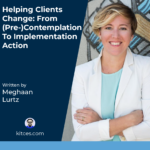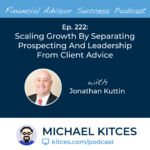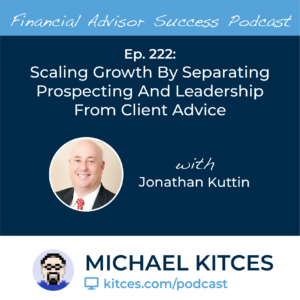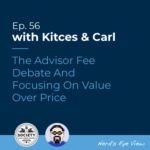Enjoy the current installment of "Weekend Reading For Financial Planners" – this week's edition kicks off with the announcement that the CFP Board is updating the Principal Knowledge Topics of the CFP exam to reflect the ever-growing focus on behavioral coaching for clients that emerged from its latest Practice Analysis of what financial planners do in practice with clients, adding in not just a "behavioral finance" educational component but an entire "Psychology of Financial Planning" category that will become incorporated into CFP curricula (and the CFP exam itself) in 2022 and beyond.
In addition, there are several other notable studies about financial advisors and financial advice in the news this week, including:
- The majority of consumers earning more than $100,000/year use a financial advisor, and a whopping 95% of them say the advisor is worth it (but more than half of consumers think financial advisors are far more expensive than they actually are!)
- The overwhelming majority of consumers working with a financial planner agree that it's better to focus on the long-term and ignore short-term market volatility (though it's not clear how often financial advisors change their clients' minds to be more long-term, or simply attract long-term-oriented clients and then help them to stay on track?)
From there, we have several articles on advisor marketing:
- Why it's important to "get mad" in speaking about the frustrations and 'financial injustices' in clients' lives to get them motivated to work alongside a financial advisor to solve those issues
- Thinking differently about 30-second or even one-sentence "elevator pitches" to open the curiosity loop with prospects (or quickly figure out if they're not a fit and move on)
- Why good branding isn't just about showing your value and Values but also tackling head-on the primary objections that result in not getting business the way you're currently doing it
We've also included a number of articles focused on retirement planning:
- Who exactly will be eligible for the new "free" COBRA health insurance subsidy that just took effect at the start of April
- How technology is changing the way we engage as we get older to "get more life from our longer lives"
- 5 different "types" of retirement savers based on their psychographic tendencies to save for and be optimistic about the future (or not)
We wrap up with three final articles, all around the theme of maximizing your own career and productivity:
- How perfectionism is the enemy of delegation, and the way to break through if you're stuck trying to figure out what you're comfortable delegating
- A framework to build your own career plan as a young financial advisor
- Creating a system for and around yourself to pull your focus away from the $10/hour tasks that can be delegated and towards the $10,000/day tasks that only you can uniquely do to add the most value to the business
Enjoy the 'light' reading!










